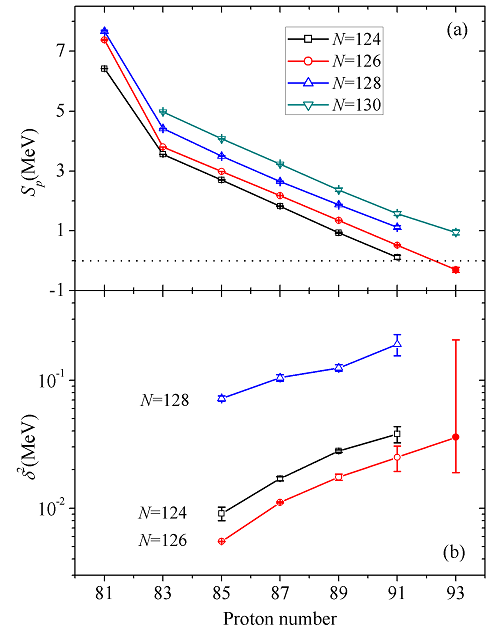Recently the researchers from IMP(Institute of Modern Physics, Chinese Academy of Sciences) reported the discovery of a new isotope 219Np, which was produced via the fusion reaction 187Re(36Ar,4n)219Np at the gas-filled recoil separator SHANS (Spectrometer for Heavy Atoms and Nuclear Structure) at the Heavy Ion Research Facility in Lanzhou (HIRFL). The a-decay properties of 219Np were measured for the first time. Actinide nuclei with N=126 have been reported up to 218U. It very important to extend the study to unknown nuclei such as 219Np and 220Pu with N=126 to explore the evolution of the N=126 shell closure beyond Z=92 and the possible ways to enter so far unknown regions in the upper part of the chart of nuclei. To study 219Np, the experiment of 187Re(36Ar,4n)219Np was carried out at the gas-filled recoil separator SHANS and a beam of 36Ar was delivered by the sector focusing cyclotron of HIRFL in Lanzhou, China. The incident beam energy was 191.5 MeV and the beam intensities were 300-400 pnA. The targets consisted of 380 mg/cm2 thick layers of 187Re, which were evaporated on 45 mg/cm2 thick carbon foils. The targets with the backing upstream were mounted on a stationary frame. The reaction products were identified using spatial and time correlations between the implants and subsequent a decays. According to the observed a-decay chain (shown in Fig. 1), an alpha-particle energy of Ea=9039(40) keV and a half-life of T1/2=0.15(+0.72/-0.07) ms were determined for 219Np. The deduced proton binding energy of -301(83) keV for 219Np fits well into the systematics (shown in Fig. 2), which gives another evidence of that there is no sub-shell closure at Z=92. Negative value of proton binding energy indicates that 219Np is a semi-magic nucleus beyond the proton drip-line. In addition, the influence of the N=126 shell closure on the stability of Np isotopes was also discussed within the framework of a-decay reduced widths. The research was supported by the National Natural Science Foundation of China, the National Basic Research Program of China and Chinese Academy of Sciences. The co-researchers came from the Institute of Theoretical Physics, Chinese Academy of Sciences and Nanjing University. The article has been published in Physics Letters B. The article link http://www.sciencedirect.com/science/article/pii/S0370269317309942 
Fig.1. The observed a-decay chain assigned to the new isotope 219Np 
Fig.2. (a) Proton binding energies Sp of odd-Z Tl-Np isotopes and (b) reduced a-decay widthsδ2of odd-Z At-Np isotopes as a function of proton number. The red solid circles refer to the values of 219Np deduced in present work |

